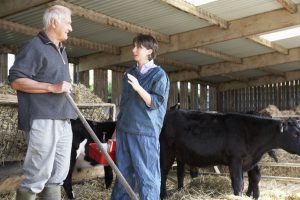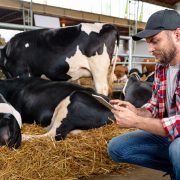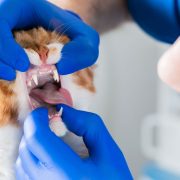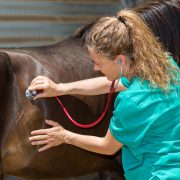Invited review: Prevalence, risk factors, treatment, and barriers to best practice adoption for lameness and injuries in dairy cattle
Invited review: Prevalence, risk factors, treatment, and barriers to best practice adoption for lameness and injuries in dairy cattle

Open access
In our edition of: Aug 2024
In our categories of: farm animals
our summary:
Roche, S. M. et al. (2024) Invited review: Prevalence, risk factors, treatment, and barriers to best practice adoption for lameness and injuries in dairy cattle. Journal of Dairy Science, 107 (6) pp. 3347-3366.
The aim of this invited narrative review was to give an overview of current research on lameness and leg injuries in dairy cattle, with a focus on reviewing herd-level prevalence estimates, risk factors, prevention strategies, control and treatment of these conditions, and barriers to adopting best practice.
The review which included results from both primary sources and recent evidence syntheses, gives evidence-based messages for the industry and identifies current gaps in knowledge.
Latest research from a systematic review including lameness prevalence from 53 studies including 400,000 cows reported a lameness prevalence of 22.8%, whilst a 2020 meta-analysis investigating lameness prevalence in British dairy cattle reported a pooled lameness prevalence of 29.5%. Despite these high prevalence estimates studies show that farmers consistently underestimate lameness and often fail to recognize mild cases of lameness.
The causes of lameness are commonly classified as infectious and non-infectious disorders. Studies show that digital dermatitis is the most common source of infectious lesions whilst sole ulcers and white line disease are the most common non-infectious disorders.
Whilst research shows numerous risk factors that are associated with lameness and injuries including housing, mangement and cow-level factors most of these studies are observational in nature and there is a need for more prospective cohort studies and randomised controlled trials to increase the knowledge of the impact of specific characteristics on lameness and injuries.
There is a substantial body of evidence on preventative approaches for lameness but little research on prevention of injuries. Studies considering disease treatment mostly evaluate treatment options for digital dermatitis however a recent meta-analysis reported that the effectiveness of these treatments remains unclear as the quality of the evidence is low.
The challenges of implementing control and preventative measures for lameness and injuries due to numerous farm-level barriers is highlighted. These barriers are both intrinsic (e.g. ability to change behaviour, attitude, perception and priorities) and extrinsic (e.g. time, money, space). Further research is needed that considers the needs of the diverse range of stakeholders (e.g. farmer, farm staff, veterinary surgeon, hoof trimmer, nutritionist, other farm advisors) and their role in influencing and implementing on-farm decisions.
Limitations of this review include the lack of clarity on the search strategy used to identify the studies and the methodology used for evaluating the published literature.
The review provides a good overview of current research on lameness and leg injuries in dairy cattle. The reported high lameness prevalence in the dairy cattle industry suggests a lack of progress in the adoption of best practices and preventative measures. It also highlights a need for better quality of evidence from future research. Any strategies to address lameness and injuries in dairy cattle must include all the stakeholders involved in influencing and implementing on-farm decisions related to lameness prevention, treatment, and control.
The following may also be of interest:
inFOCUS: A prospective cohort study examining the association of claw anatomy and sole temperature with the development of claw horn disruption lesions in dairy cattle [RCVS Knowledge] [online] Available from: https://infocus.rcvsknowledge.org/a-prospective-cohort-study-examining-the-association-of-claw-anatomy-and-sole-temperature-with-the-development-of-claw-horn-disruption-lesions-in-dairy-cattle/ [Accessed 19 August 2024]
inFOCUS: Prospective cohort study of the association between early lactation mastitis and the presence of sole ulcers in dairy cows [RCVS Knowledge] [online] Available from: https://infocus.rcvsknowledge.org/prospective-cohort-study-of-the-association-between-early-lactation-mastitis-and-the-presence-of-sole-ulcers-in-dairy-cows/ [Accessed 19 August 2024]
Claiming CPD for reading inFOCUS articles
Reading and reflecting on articles can count towards your CPD, and we have a template to help you with the process.
Image copyright attribute: stockbroker / 123RF Stock Photo










Leave a Reply
Want to join the discussion?Feel free to contribute!